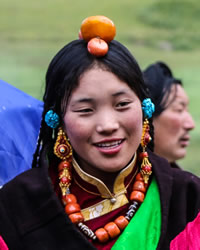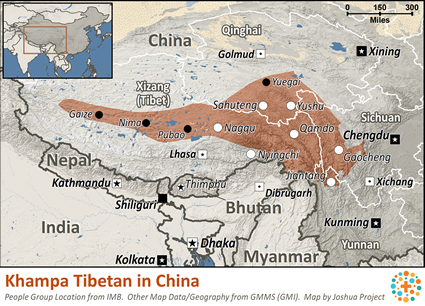The Khampa have a fearsome reputation as the most hostile and violent of Tibetans. The Khampa have a long history of conflict with the Chinese, who annexed most of Kham Province to Sichuan in 1720. "No Chinese dares to enter the territory for fear of being murdered." Military clashes between the two groups occurred in 1918, 1928, and 1932. In 1950 the Chinese captured the town of Chamdo without firing a shot. The Khampa fled in terror when the Chinese set off a huge fireworks display on the outskirts of the town. In late 1955 the Chinese authorities ordered the monks of Litang Monastery to produce an inventory for tax assessment. The monks refused to oblige. In February 1956, the Chinese laid siege to the monastery which was defended by several thousand monks and farmers. Litang and surrounding areas were bombed by Chinese aircraft. In 1959 the Khampa in Lhasa organized a revolt against Chinese rule. "The fighting lasted three days with the Tibetans caught up in a religious fervor, not caring whether they lived or died."
Sexual immorality among the Khampa is considered normal behavior. A 1950s survey "found the rate of venereal diseases was 40% in peasant areas and 50.7% in pasture areas."
The Khampa, like all Tibetan groups, are devout followers of Buddhism.
Catholic work among the Khampa commenced in the mid-1800s. The Catholic mission at Batang Township was demolished in 1873 and 1905 - after two priests had been killed and converts who would not deny their faith were shot. By 1924 the mission numbered 2 bishops, 15 French missionaries, and 4,800 baptized converts of whom "about two-fifths were Tibetans." Today there are 200 Khampa Catholics near Kangding and some near Batang and Yajiang. Protestant work among the Khampa commenced in 1897. The missionaries ran hospitals, schools, and orphanages, but saw little fruit. By 1922 the Protestant station at Batang had won ten converts.
The Khampa people need to heed and embrace the only Savior. As it stands, they look elsewhere for spiritual guidance.
Pray that the sheer wonder of knowing Jesus and the impact he has on their lives and the joy he brings spur believers to share Christ with the Khampa people.
Pray the hearts of the Khampa people would be stirred by a sovereign work of the Holy Spirit readying them for the time when they hear the gospel message being shared with them.
Pray they will experience dreams and visions of Jesus leading them into a saving relationship with him.
Pray for an unstoppable movement to Jesus Christ among the Khampa people.
Scripture Prayers for the Khampa Eastern in China.
Operation China, Asia Harvest, Copyrighted © Used with permission.
| Profile Source: Joshua Project |

























